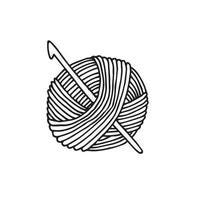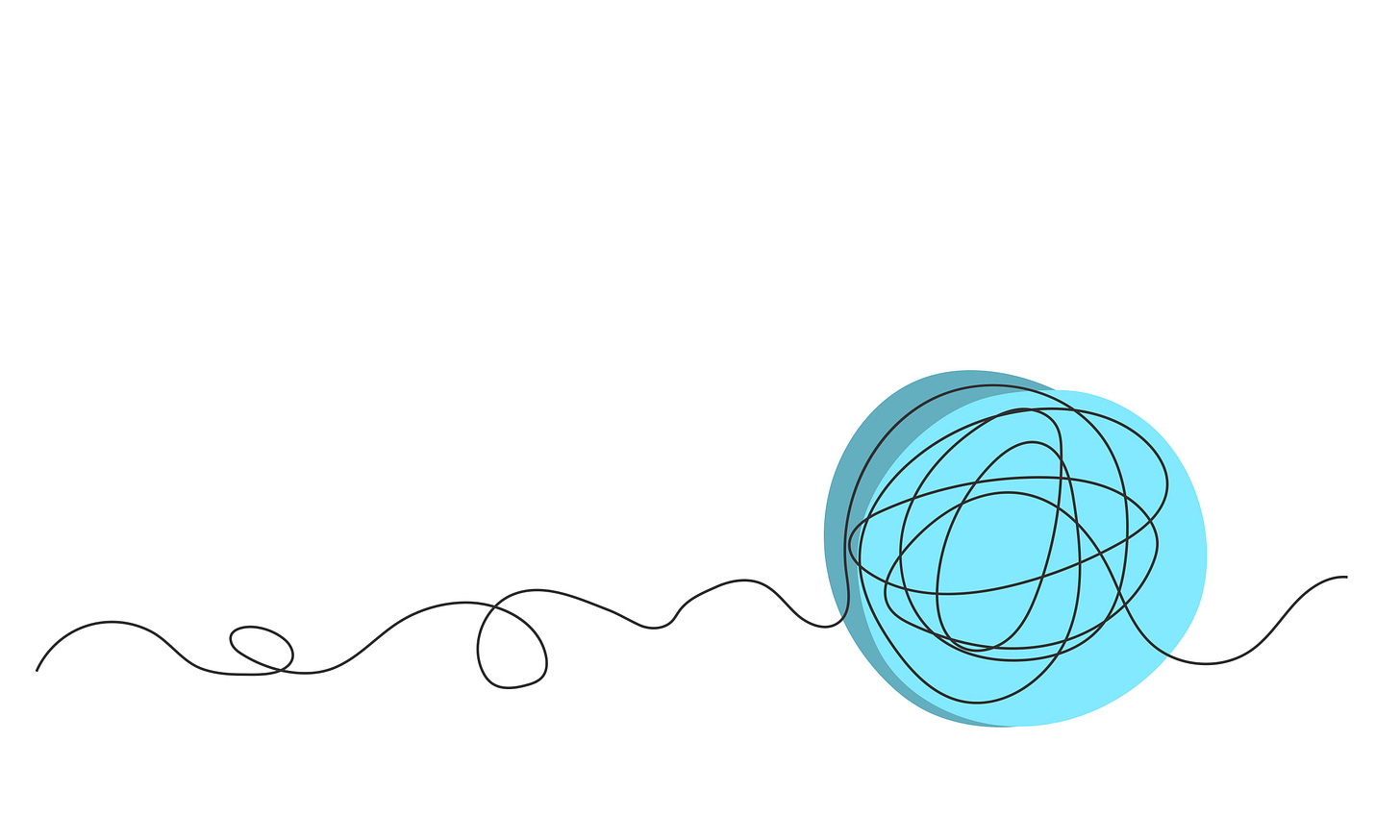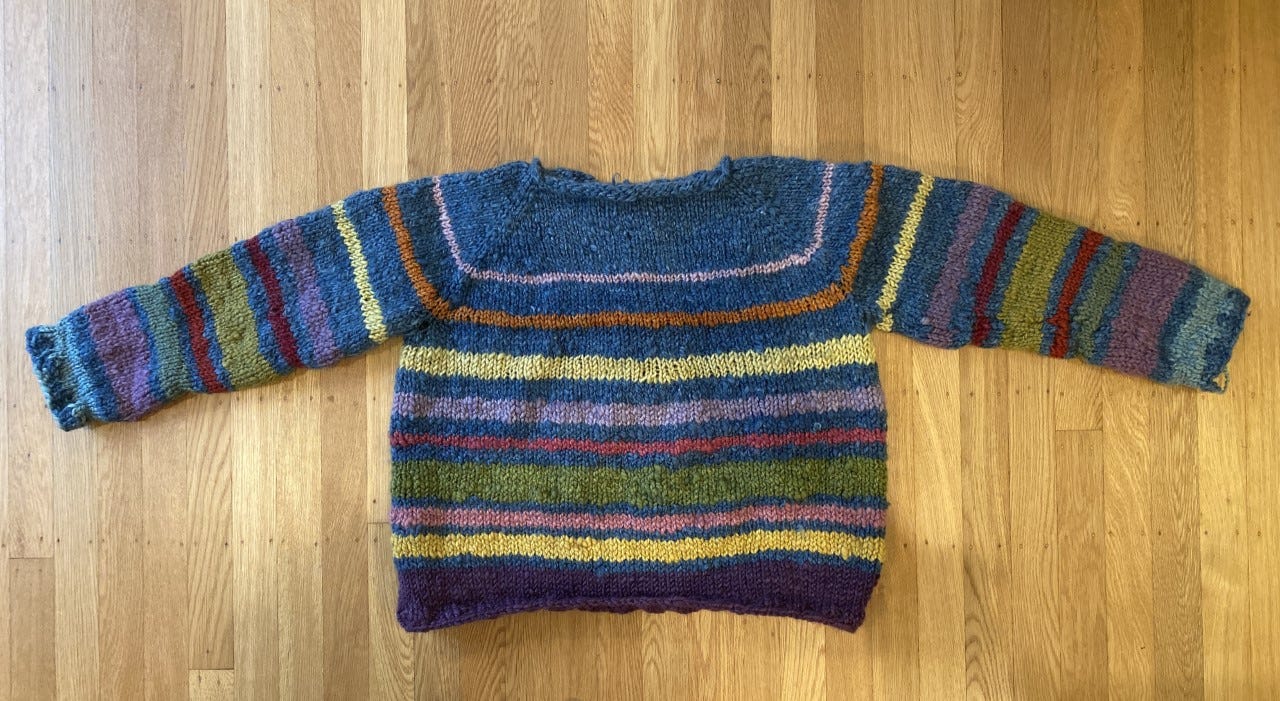Writing is Like Knitting Wool
Talking creativity, book-writing and gender politics with bestselling author Peggy Orenstein. Her latest is "Unraveling."
You’re reading Wait, Really?, a newsletter unpacking what's in the culture, with a feminist spin. Want it in your inbox? Sign up below.
My grandmother taught me to crochet, though she also knew how to knit. I remember doing it regularly during a particularly stressful period in my life, and noticing the strange calm that came from doing something with my hands (and something that wasn’t typing).
But it wasn’t until talking to Peggy Orenstein, who is not a professional knitter but a professional writer, that it ever occurred to me that these two things had anything in common. And yet they do: Storytelling can be a lot like knitting together threads. You can crochet in any direction, which is also a lot like writing.
I’ve been a fan of Peggy’s work for many years; I wrote about her bestselling book, Cinderella Ate My Daughter, when I was a young reporter at Newsweek. That was actually her fourth book; her first, Schoolgirls, about young women and self-esteem, had come out more than a decade prior — and launched a national conversation about girls and confidence that continues to this day. She went on to write the bestselling Girls and Sex, then Boys and Sex, which looked at how girls, and then boys, were navigating the new sexual landscape, from porn to pleasure to consent.
But her latest is a bit more personal — and, perhaps, meditative.
It’s called Unraveling: What I Learned About Life While Shearing Sheep, Dyeing Wool, and Making the World’s Ugliest Sweater, and it was spun (quite literally) out of a pandemic project involving yarn.
That book is out in paperback now, and Peggy let me ask her a few questions about it — as well as process, ambition and the current state of teenage girls and boys.
So Peggy, it was during early Covid that you set out to make a sweater totally from scratch. What inspired this ambitious pandemic project?
When lockdown happened, like a lot of people, I found a lot of comfort and joy in doing work with my hands — and in my case that was knitting. I learned to knit from my mom, and that was something so common in the people I talked with for this book that I started abbreviating it SLFHM: She Learned From Her Mom. That was an important theme in the book: what we learn from our moms, what we don’t learn from our moms, what we wish we learned from our moms, what we wish we didn’t learn from our moms.
Anyway, so I’m knitting, and I start thinking, “Gee, who thought of taking two sticks and some yarn and doing this thing?” “How did knitting happen?” And then I start thinking, “For that matter, how did yarn happen?” And then I get kind of obsessed, and the next thing I know I’m deciding that what I’m going to do during this time when I can’t do anything else is to make a sweater from scratch.
OK, wow. And you really mean from scratch. So you sheared the sheep (whose name is Martha), cleaned and untangled the wool, spun it to make yarn, dyed it, and knitted it into a sweater. What did you learn about yourself during this process?
One thing I learned was to value process over product. I’m someone who does something creative for a living — writing — which is a great gift. But it also means that you have to pay attention to a lot of product-oriented things: whether you can sell what you’re doing and for how much, the marketing, the marketplace. And that can kind of erode the thing that used to bring you joy. There was something really liberating about the total incompetence I felt in pursuing this project. I’m not an artist. I’m not an expert. And through most of the book I fight that hard: I keep saying how much I suck, how bad I am, how hard it is. And then I realize: THAT IS THE POINT. The beginner’s mind. The process. Not the outcome — hence the title. I know the sweater is not “ugly” but it could’ve been.
One of the things that seems so peaceful about knitting is the linear process of it. Maybe I don't understand knitting, but it strikes me as much more straightforward than knitting together a book. When you’re writing, do you end up with bad stitches, things that just don’t work?
I mean, knitting is linear but it’s also kind of back and forth. You have to rip a lot. You make mistakes. And you have to also sometimes take a deep breath and rip back a lot, sometimes days or weeks of work. That’s hard. But I think of it as part of the project, unknitting rather than ripping.
I guess book writing has that quality too. You have to eventually create something with a through-line from beginning to end. And the words are stitches, the sentences rows. And definitely you spend a lot of time ripping, or editing, or starting over. But I tend not to start at the beginning when I write. That’s death for me. If I start at the beginning I’ll try to put everything in the first chapter, or the introduction. I start where I can. That’s my big advice to novice writers. You might start on page 20. Or page 50. Or page 100. Start where you can and then work out and back and up and down. Write the first chapter and the intro last. At least if you are a nonfiction writer; I don’t do fiction. Actually, in that way writing is more like crochet, which is three dimensional — you can crochet in any direction, you can’t do that with knitting as easily.
“I tend not to start at the beginning when I write. That’s death for me. That’s my big advice to novice writers. Start where you can and work out and back and up and down.”
I feel like knitting is stereotypically thought of as the unsexy hobby of old ladies with too much free time on their hands. But there’s a long history of knitting as a revolutionary act. Can you say more about that?
I have a bunch of things to say about that. First of all, all kinds of people knit, young as well as old, people of all genders and ethnicities, they really do. Secondly, even if it was just old women — so what? The dismissal of and derision toward women from midlife onward — especially if we stop chasing social media standards of beauty — is a nasty form of ageist sexism. Also, that innocuousness can be a strength. Older women have done some pretty subversive stuff with their innocent crafting over the years, it’s a true practical magic: knitting is a “craft” that you start by “casting on” which evokes spells and witchcraft. There is real sorcery in making something from nothing, right?
“Women have always used yarn as political voice, especially when they weren’t allowed one.”
But yeah, women have always used yarn as political voice, especially when they weren’t allowed one. There was so much incredible history of dissent and activism from ancient times onward that I wrote about, stuff I had no idea of. Even now, I mean, think about what the first thing women did when Trump got elected. They knit those hats. No matter how you ended up feeling about them, it’s significant, and there is a long history of women using craftivism in that way.
It’s funny, cloth is a kind of universal thing that all of us touch, or weave, or something else.
If you think about it: we come into this world and are immediately wrapped in cloth. We spend much of our time here wrapped in cloth. When we die, we are wrapped in cloth. Textile metaphors are woven (!) through our language. Even in the virtual world “text” is from the same root as “textile” and we call the responses to a message “threads.” Ok, I’ll stop now. I get excited.
I want to switch gears for a moment and ask you about girls — which has been a focus of so much of your work. There have been countless headlines declaring “teenage girls are not ok” and “teen girls are in crisis” over the past year. Can you talk a bit about that?
I’m always toggling back and forth among projects, but I never stop writing about girls and women. But it’s so hard, because people get fatigued, and to keep saying “girls are not OK”… it’s like, what else is new? And really, is anyone OK? But we do have a lot more practical advice for parents of girls. We do understand the unique impact of threat (physical, social or virtual) on their “stress machinery” and we do have more knowledge about how to help them. I also really recommend Donna Jackson Nakazawa’s book, Girls on the Brink, which is great on all the brain science and has a lot of pragmatic strategies.
Your book, Boys and Sex, was a followup to Girls and Sex. How should we be thinking about them, particularly against the backdrop of what we are seeing with girls?
I think we’ve been more aware of the media impact on girls and as advocates of girls we’ve done a better job with media literacy, talking to girls, talking amongst ourselves as women. But boys are growing up in the same stew and, arguably, its turned up hotter. They need a strong counter-narrative, a strong critique, a lot of discussion about images of masculinity and what might be generative and what might be undermining and they need it to come from all their trusted adults. And that doesn’t mean always making masculinity “bad” or “toxic,” but helping them learn and think critically about what it means to be a man and the messages that bombard them in traditional media, social media and porn.
“Boys need a counter-narrative. And that doesn’t mean always making masculinity ‘bad’ or ‘toxic,’ but helping them learn and think critically about what it means to be a man.”
We have to purposefully help them broaden their emotional repertoires beyond happiness and anger, to broaden the masculine repertoire for dealing with disappointment, anger, desire. We have to say not just what we don’t want from boys but what we do want from them.
You have a career that includes eight books, hundreds of articles, and you do it as a freelancer. I’m curious how you think about your own ambition. Has it changed over time? How do you find a healthy model?
It’s weird to suddenly realize I have this whole body of work, and I don’t know if people can have the kind of career I had if they’re starting now. It was hard enough when I did it. It is a hustle, or a juggling act. So I’m kind of proud and kind of stunned that I have made it work, in tandem with my husband who is a documentary filmmaker, meaning we are two people without a “real” job between us. But it’s been such an incredible ride. I guess as I’m getting older, thinking about the future, I think about being able to get to a point where I can afford to experiment more, take more risks. I hope to have a public voice for some time yet, but I also feel a need to go more internal — take a look at parts of me as a writer that I’ve maybe let grow dormant.
Last Q! Do you wear the “world’s ugliest sweater” often? (Which, for what it’s worth, I think is v cute!)
Oh gosh, Jessica, the sweater weighs THREE POUNDS. It is truly unwearable, it is so heavy. I mean, maybe if I were back visiting my family in Minnesota. In February. But here? No. It’s too heavy, too hot. I think of it more as an art piece, to remind me about process, about creativity, about that beginner’s mind. And how sometimes, if you’re lucky—we stayed healthy during the pandemic, we were solvent, we didn’t lose anyone, we could do enough work to get by, we remained the “worried well”—you can find something, or make something, beautiful out of a time that is very hard. And that, again, is the magic of craft.











Great interview- I’m off to buy the book. Thank you!
I like all these conversations you're publishing, Jessica! I'm enthralled and never have to leave the hovel.